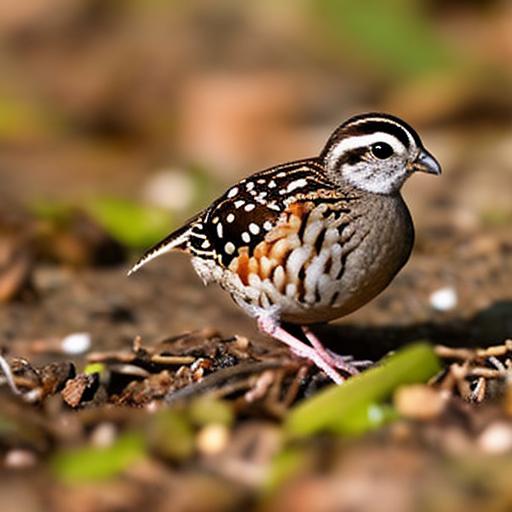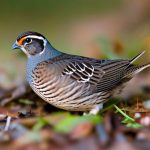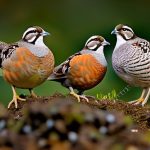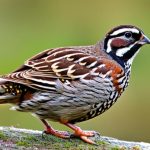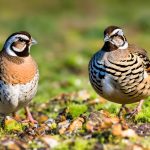Baby quail, also known as chicks, have specific needs that must be met in order for them to thrive and grow into healthy adult quail. Understanding these needs is crucial for anyone looking to raise baby quail. Firstly, baby quail require a warm and safe environment to grow in. They are delicate creatures that need to be kept at a consistent temperature, ideally around 95-100 degrees Fahrenheit for the first week of their lives, and then gradually decreased by 5 degrees each week until they are fully feathered. Additionally, baby quail need access to clean water and a balanced diet to support their rapid growth. They also need protection from predators and a stress-free environment to ensure their well-being.
Furthermore, baby quail are social animals and thrive in the company of their own kind. It is important to provide them with appropriate socialization and handling to ensure they grow up to be well-adjusted adult quail. Lastly, monitoring their health and well-being is crucial to ensure they are growing and developing as they should. By understanding and meeting the needs of baby quail, you can ensure that they have the best start in life and grow into healthy adult quail.
Key Takeaways
- Baby quail need a warm and draft-free environment to thrive
- Provide a balanced diet of high-quality feed and clean water for baby quail
- Regularly monitor baby quail for signs of illness and maintain a clean living space
- Handle baby quail gently and provide opportunities for socialization with other quail
- Protect baby quail from predators by securing their living area and providing adequate shelter
- Gradually transition baby quail to adult food and housing as they grow
Creating the right environment for baby quail
Creating the right environment for baby quail is essential for their well-being and development. Firstly, it is important to provide a warm and safe brooder for the baby quail. This can be achieved by using a heat lamp or a brooder heater to maintain the appropriate temperature for the chicks. The brooder should also be well-ventilated to ensure good air quality and prevent the build-up of ammonia from their droppings. Additionally, it is important to provide a non-slippery surface such as paper towels or rubber shelf liner to prevent leg injuries in the chicks.
Furthermore, providing access to clean water and a balanced diet is crucial for the growth and development of baby quail. Water should be provided in shallow containers to prevent drowning, and the diet should consist of high-quality chick starter feed with added vitamins and minerals. It is important to monitor their food and water intake to ensure they are getting enough nutrients for healthy growth. Lastly, providing enrichment such as perches, hiding spots, and toys can help keep the baby quail stimulated and reduce stress. By creating the right environment for baby quail, you can ensure that they have the best start in life and grow into healthy adult quail.
Feeding and watering baby quail
Feeding and watering baby quail is crucial for their growth and development. Baby quail require a balanced diet that is high in protein to support their rapid growth. A good quality chick starter feed with added vitamins and minerals is essential for their well-being. It is important to provide access to feed at all times and monitor their intake to ensure they are getting enough nutrients. Additionally, providing clean water at all times is crucial for the health of baby quail. Water should be provided in shallow containers to prevent drowning, and it should be changed regularly to ensure it is clean and free from contaminants.
Furthermore, it is important to provide grit to baby quail to help them digest their food properly. Grit can be provided in a separate container or mixed into their feed. Additionally, providing treats such as mealworms or fresh greens can help keep the baby quail stimulated and provide additional nutrients. It is important to monitor their weight and overall condition to ensure they are getting enough food and water for healthy growth. By providing a balanced diet and access to clean water, you can ensure that the baby quail grow into healthy adult quail.
Monitoring and maintaining the health of baby quail
Monitoring and maintaining the health of baby quail is crucial for their well-being and development. It is important to regularly check on the baby quail to ensure they are active, alert, and eating and drinking normally. Any signs of illness or distress should be addressed immediately to prevent further complications. Additionally, it is important to keep their brooder clean and well-ventilated to prevent the build-up of ammonia from their droppings, which can lead to respiratory issues.
Furthermore, it is important to provide regular health checks for the baby quail, including checking for signs of parasites such as mites or lice. If any signs of parasites are found, it is important to treat them promptly to prevent further infestation. Additionally, it is important to provide access to veterinary care if needed to address any health concerns that may arise. By monitoring and maintaining the health of baby quail, you can ensure that they grow into healthy adult quail.
Socializing and handling baby quail
Socializing and handling baby quail is important for their well-being and development. Baby quail are social animals that thrive in the company of their own kind. It is important to provide them with appropriate socialization by keeping them in groups of at least three or more chicks. This will help prevent stress and ensure they have companionship as they grow. Additionally, it is important to handle the baby quail gently and regularly to help them become accustomed to human interaction.
Furthermore, providing enrichment such as perches, hiding spots, and toys can help keep the baby quail stimulated and reduce stress. It is important to spend time with the baby quail each day to help them become comfortable with human interaction. Additionally, it is important to provide a stress-free environment for the baby quail by keeping noise levels low and avoiding sudden movements around them. By socializing and handling baby quail appropriately, you can ensure that they grow up to be well-adjusted adult quail.
Protecting baby quail from predators

Protecting baby quail from predators is crucial for their safety and well-being. Baby quail are vulnerable to a wide range of predators including cats, dogs, raccoons, snakes, and birds of prey. It is important to provide a secure brooder or coop that is predator-proof to prevent any unwanted visitors from harming the baby quail. This can be achieved by using hardware cloth or wire mesh with small openings to prevent predators from gaining access.
Furthermore, it is important to provide a secure outdoor run for the baby quail once they are old enough to go outside. This will allow them to enjoy fresh air and sunshine while still being protected from predators. Additionally, it is important to provide adequate lighting around the brooder or coop to deter nocturnal predators such as raccoons or owls. By taking steps to protect the baby quail from predators, you can ensure that they grow into healthy adult quail.
Transitioning baby quail to adulthood
Transitioning baby quail to adulthood is an important step in their development. As the baby quail grow, they will need more space to move around and stretch their wings. It is important to provide a larger coop or outdoor run for them once they are fully feathered and able to regulate their body temperature. Additionally, it is important to gradually decrease the temperature in their brooder as they grow older until it matches the ambient temperature outside.
Furthermore, it is important to gradually introduce them to adult quail once they are old enough. This can be done by placing them in a separate area within the coop or run so they can see and hear the adult quail without being directly exposed to them. This will help prevent any aggression from the adult quail towards the younger ones. Additionally, it is important to monitor their behavior and interactions with the adult quail to ensure a smooth transition. By transitioning baby quail to adulthood gradually and carefully, you can ensure that they continue to thrive as healthy adult quail.
If you’re interested in learning about the incubation period for goose eggs, you might also want to check out this informative article on PoultryWizard. Understanding the intricacies of hatching and raising different types of poultry can be crucial for their survival, just like the care needed to keep baby quail alive.
FAQs
What do baby quail eat?
Baby quail should be fed a diet of high-protein game bird starter feed, which can be found at most pet stores or farm supply stores. Additionally, they can be given small insects, such as mealworms or crickets, as treats.
How often should baby quail be fed?
Baby quail should be fed small amounts of food several times a day. For the first few days, they should be fed every 1-2 hours, gradually decreasing to 4-6 feedings per day as they grow.
How should baby quail be housed?
Baby quail should be kept in a brooder with a heat lamp to maintain a temperature of around 95 degrees Fahrenheit for the first week, gradually decreasing the temperature by 5 degrees each week until they are fully feathered. The brooder should be lined with paper towels or pine shavings and kept clean to prevent disease.
What are common health issues for baby quail?
Common health issues for baby quail include pasty butt, which is a condition where droppings stick to the vent and can block it, and splayed legs, which is a condition where the legs splay out to the sides. Both of these issues can be treated with proper care and attention.
How can I prevent predators from harming baby quail?
To prevent predators from harming baby quail, it is important to keep them in a secure brooder or coop with a wire mesh covering to keep out predators such as cats, dogs, and birds of prey. Additionally, it is important to keep the area around the brooder or coop free of tall grass or other hiding spots for predators.
Meet Walter, the feathered-friend fanatic of Florida! Nestled in the sunshine state, Walter struts through life with his feathered companions, clucking his way to happiness. With a coop that’s fancier than a five-star hotel, he’s the Don Juan of the chicken world. When he’s not teaching his hens to do the cha-cha, you’ll find him in a heated debate with his prized rooster, Sir Clucks-a-Lot. Walter’s poultry passion is no yolk; he’s the sunny-side-up guy you never knew you needed in your flock of friends!

